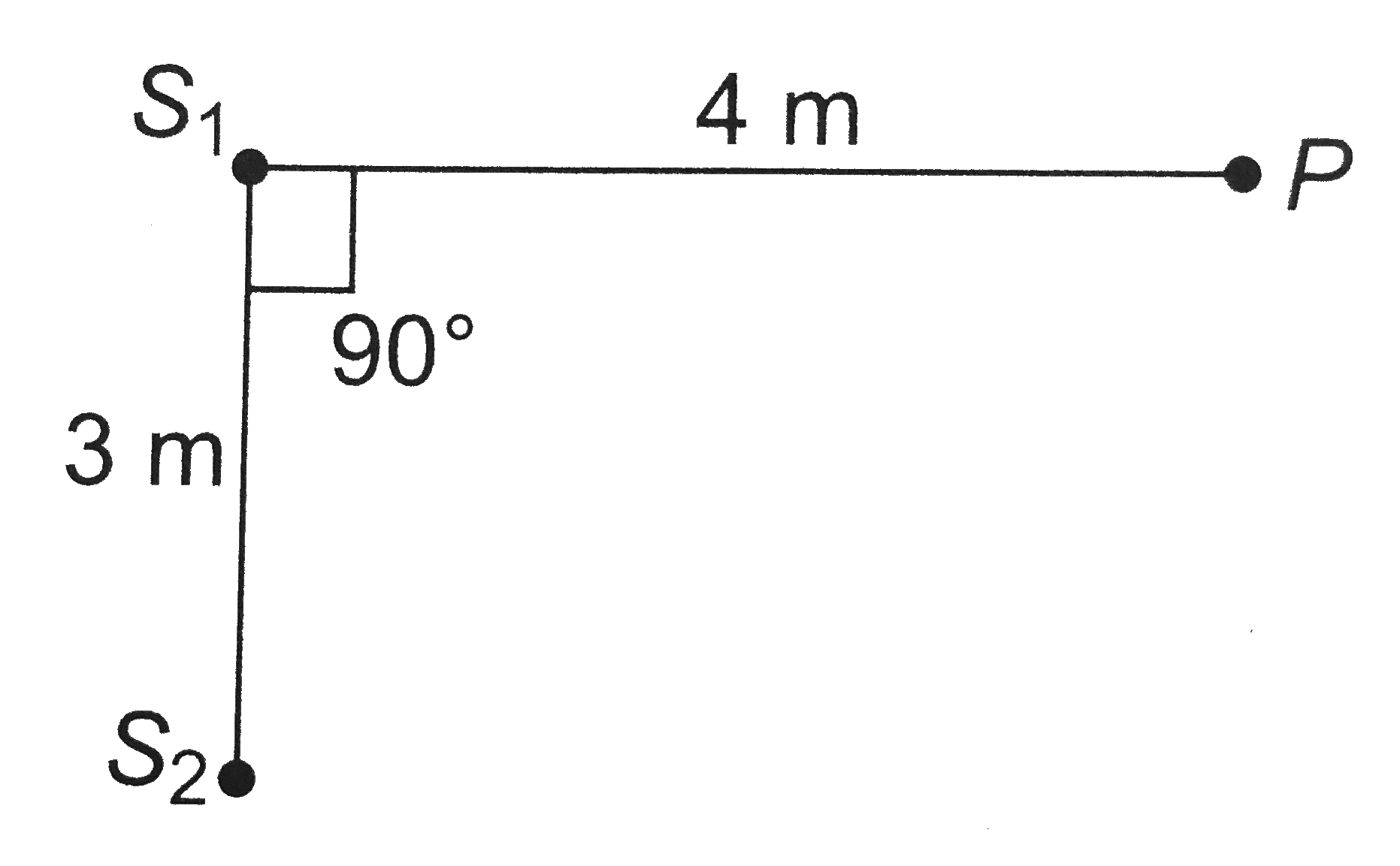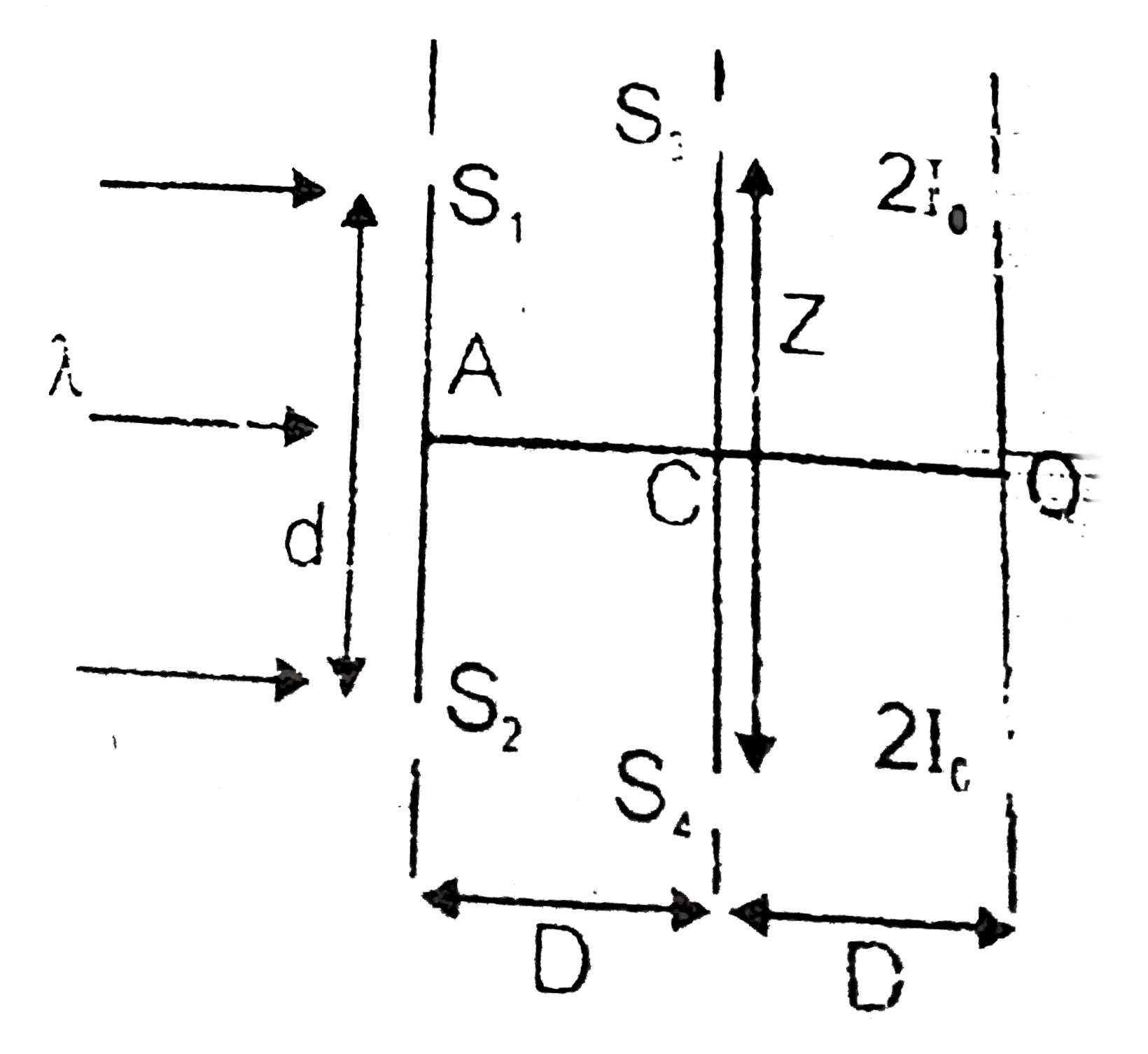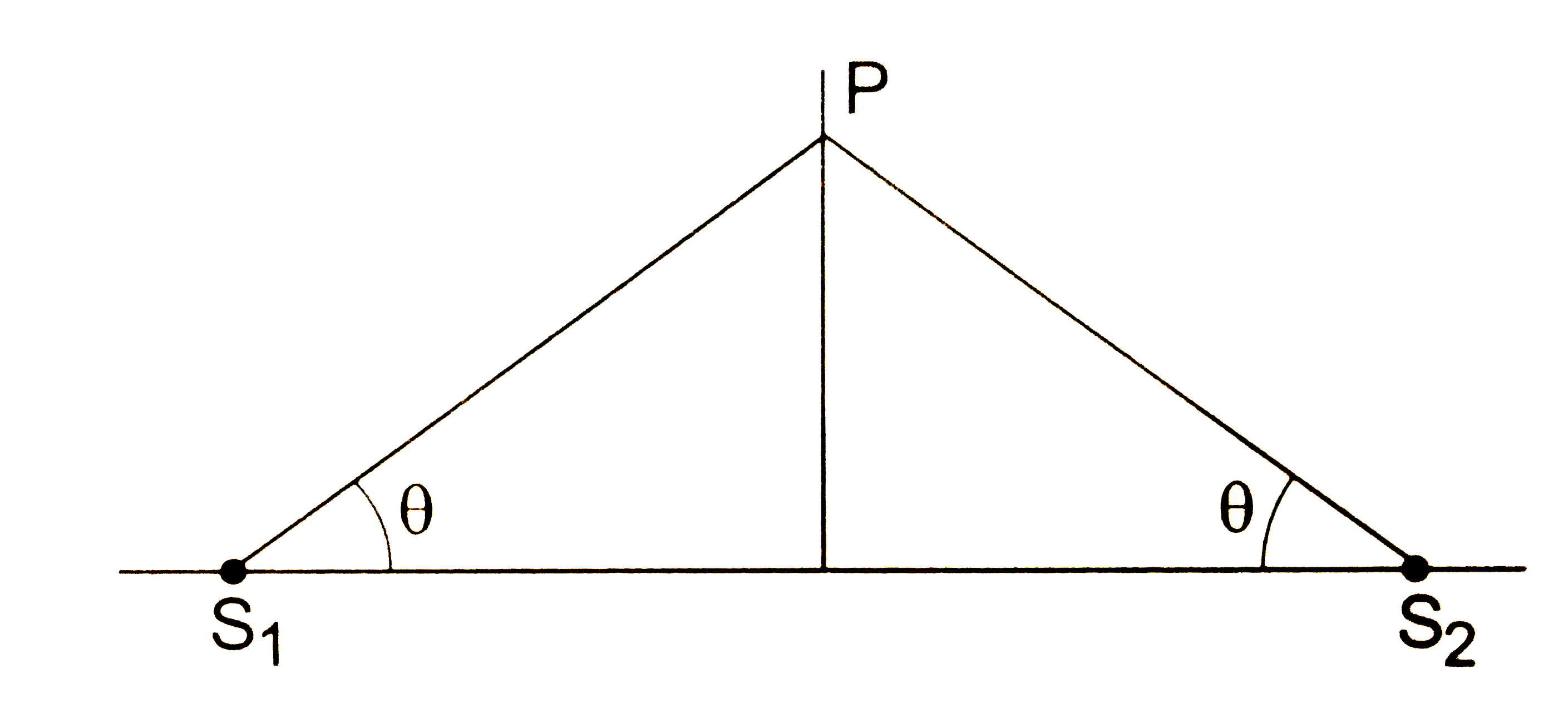Sounds from two identical sources S1 and S2 reach a point P. When the sounds reach directly, and in the same phase, the intensity at P is I0. The power of S1 is now reduced by 64% and the phase difference between S1 and S2 is varied continuously. The maximum and minimum intensities recorded at P are now Imax and Imin Solution in Gujrati
Imax=0.64I0
Imin=0.36I0
ImaxImin=16
ImaxImin=1.640.36
The correct Answer is:A, C
Let a= Initial amplitude due to S1 and S2 each
I0=k(4a)2, where k is a constant
After reduction of power of S1,
Due to superposition
amax=a+0.6a=1.6a, and
amin=1−0.6a=0.4a
Imax/Imin=(amax/amin)2=(1.6a/0.4a)=16
Topper's Solved these Questions
- WAVES AND OSCILLATIONSBOOK - ALLEN CHAPTER - WAVES AND OSCILLATIONSEXERCISE - Part-1(Exercise-03)
31 Videos
- WAVES AND OSCILLATIONSBOOK - ALLEN CHAPTER - WAVES AND OSCILLATIONSEXERCISE - Part-1(Exercise-04)[A]
29 Videos
- WAVES AND OSCILLATIONSBOOK - ALLEN CHAPTER - WAVES AND OSCILLATIONSEXERCISE - Part-1(Exercise-01)
53 Videos
- SEMICONDUCTORSBOOK - ALLEN CHAPTER - SEMICONDUCTORSEXERCISE - Part-3(Exercise-4)
50 Videos
Similar Questions
Statement-1 : Sound travels faster in moist air
Statement-2 : The density of moist air is less then density of dry air.
View SolutionA stone dropped from the top of a tower of height 300 m high splashes into the water of a pond near the base of the tower. When is the splash heard at the top givne that the speed of sound in air is 340ms−1?(g=9.8ms−2)
View SolutionWater waves produced by a motor boat sailing in water are
View SolutionAt absolute zero temperature Si acts as ……..
View Solution
S1 and S2 are two coherent sources of sound of frequency 110Hz each they have no initial phase difference. The intensity at a point P due to S1 is I0 and due to S2 is 4I0. If the velocity of sound is 330m/s then the resultant intensity at P is
View SolutionThree sources of sound S_(1),S_(2) and S_(3) of equal intensity are placed in a straight line with S_(1)S_(2) = S_(2)S_(3) shown in the figure. At a point P, far away from the sources, the wave coming from S_(2) is 120^(@) ahead in phase of that from S_(1), Also, the wave coming from S_(3) is 120^(@) ahead of that from S_(2). What would be the resultant intensity of sound at P ?
View SolutionRatio waves originating from sources S_(1) and S_(2) having zero phase difference and common wavelength lambda will show completely destructive interference at a point P is S_(1)P-S_(2)P is
View SolutionIn arrangement shown in figure, plane wavefront of monochromatic light of wavelength λ is incident on identical slits S1 and S2. There is another pair of indentical slits S3 and S4 which are having separation Z=λD2d Point O is on the screen at the common perpendicular bisector of S1S2 and S3S4.I1 is the intensity at point O Now the board having slits S3S4 is moved upward parallel to itself and perpendicular to line AO till slit S4 is on line AO and it is observed that now intensity at point O is I2 then I2I1 is :

View SolutionThree coherent sources S_(1), S_(2)" and" S_(3) can throw light on a screen. With S_(1) switched on intensity at a point P on the screen was observed to be I. With only S_(2) on, intensity at P was 2I and when all three are switched on the intensity at P becomes zero. Intensity at P is I when S_(1)" and" S_(2) are kept on. Find the phase difference between the waves reaching at P from sources S_(1) "and" S_(3) .
View SolutionTwo identical sounds s_(1) and s_(2) reach at a point P phase. The resultant loudness at a point P is not higher than the loudness of s_(1) . The value of n is
View SolutionTwo identical sources of sound S_(1) and S_(2) produce intensity I_(0) at a point P equidistant from each source . (i) Determine the intensity of each at the point P . (ii) If the power of S_(1) is reduced to 64% and phase difference between the two sources is varied continuously , then determine the maximum and minimum intensities at the point P . (iii) If the power of S_(1) is reduced by 64% , then determine the maximum and minimum intensities at the point P .
View Solutionधवनि की तीन स्त्रोत S1,S2 तथा एS3 क ही रेखा में रखे हुए है -S1S2=S2S3 है और तीनो एक ही त्रीवता की धवनि उत्पन कर रखे हुए है S1S2=S2S3 है और तीनो एक ही त्रीवता की धवनि उत्पन्न क्र रहे है इसी रेखा पर इन स्त्रोत से बहुत दूर के एक बिंदु P पर S2 से आती रंग S1 से आती तरंग से 120∘ आगे की कला पर है तथा S3 से आती तरंग S2 से आती रंग से 120∘ आगे की कला पर है P बिंदु पर धवनि की परिणामी त्रीवता क्या होगी

View Solutionधवनि की दो स्त्रोत S1 तथा S2 एक ही आवर्ती से एक ही कला में कंपन कर रहे S1S2 के लम्बार्द्धक पर के बिंदु P पर धवनि की त्रीवता I0 हिअ यदि θ=45∘ हो तथा दोनों में से एक स्त्रोत को बंद कर दिया जय तो P बिंदु पर त्रीवता I0 से बदलका क्या हो जायगी -(b)यदि θ=60∘ हो तथा दोनों में से एक स्त्रोत को बंद कर दिया जय तो P बिंदु पर त्रीवता I0 बदलकर क्या हो जायगी

View SolutionConsider the interference at P between waves emitting from three coherent sources in the same phase located at S_(1) , S_(2) and S_(3) . If the intensity due to each source is I_(0)=12Wm^(-2) at P and (d^(2))/(2D)=(lamda)/(3) then what will be the resultant intensity (in Wm^(-2) ) at P?
View SolutionTwo coherent point sources S_(1) and S_(2) vibrating in phase emit light of wavelength lambda .The separation between the sources is 2 lambda .The smallest distance from S_(2) on a line passing through S_(2) and perpendicular to S_(1)S_(2) where a minimum intensity occurs is :
View SolutionTwo identical sounds s_(1) and s_(2) reach at a point P phase. The resultant loudness at a point P is not higher than the loudness of s_(1) . The value of n is
View Solution
